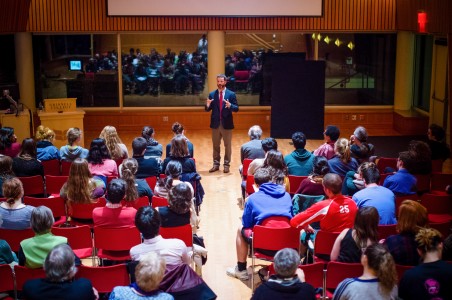
Richard Fogarty, University of Albany Associate Professor of History and Associate Dean for General Education, delivered a lecture titled “Visions of Race and Empire in France during the Great War” to a packed audience in JRC 101 on Monday evening as part of the Center for the Humanities’ ‘A Century of War’ symposium.
Director of the Center for the Humanities, Professor Shuchi Kapila, English, introduced Professor Fogarty and outlined the importance of this symposium’s topic 100 years after the beginning of the First World War.
“The Century of War symposium hopes to explore representations of World War I in arts, culture and politics, as well as its manifestations in present social and psychic life,” Kapila said in her introduction.
Professor Fogarty began his talk by addressing a photograph of a French soldier projected behind him and explaining the significance of the image’s subject.
“This is the stereotypical image of French citizens who fought in World War I,” Fogarty said. “All French citizens had to serve in the military, it was a Republican army of citizens. They were known as ‘poilu,’ which means ‘hairy,’ because of their beards. They grew beards as recognition of who they were—civilians. It’s important to note that they wanted to declare that.”
The second photograph in Fogarty’s slide was in color, a relative rarity at the time. It depicted West African soldiers wearing beige khaki uniforms and red headgear relaxing beside a building.
“But these people also fought for France. This khaki uniform was distinctive to colonial soldiers,” Fogarty said. “These men are from West Africa and are part of the French Empire, which was second largest in 1917 to Britain.”
A third photo depicted soldiers from what the French called ‘Indochina’—Vietnam, Laos and Cambodia. Fogarty noted that in total, roughly 500,000 soldiers from France’s colonies fought during World War I.
“To bring non-white soldiers not from Europe to fight in Europe was very unusual,” Fogarty said. “Britain did it briefly with soldiers from India, but stopped in part for reasons of racial prestige.”
Fogarty’s research and his most recent book titled “Race and War in France: Colonial Subjects in the French Army, 1914-1918” focus on these 500,000 soldiers in the context of French colonialism and developing racial attitudes. During his talk, Fogarty said he became interested in these topics after learning that many African-Americans who served in France during the war were treated better than they were in the United States.
“Many people encountered a society that appeared to be colorblind,” Fogarty said. “They were treated, as one man said in a letter, ‘As if we weren’t black.’ And so after the war many African-Americans moved to France. Paris became symbolic of racial tolerance. But I also knew that, at the same time, France had one of the largest colonial empires in the world—so race must have mattered to France, but in different ways. I wanted to figure out how race worked in France during this era.”
While projecting another image of a Moroccan officer leading soldiers in training, Fogarty explained, “This could not happen in the British army, but you could become a commissioned officer in the French army even if you were African.” Fogarty added that the French army went to great lengths to accommodate Muslims in the army, “Even going to a lot of trouble to give Muslim soldiers the proper burial rights.”
Part of Fogarty’s research involves analyzing how images of empire were constructed in propaganda produced by the French government. During the talk, he presented several of these posters, which encouraged French citizens to purchase war bonds.
“I tell my students when we look at these images that nothing is unintentional. Everything in the image means something,” Fogarty said. “In this one, you have indigenous people with their backs turned, they’re treated as the anonymous masses. The one exception is the child, who is turned towards us. That’s what the war is for. Children stand for the future that France is fighting for. In this image, you can see what empire stood for in the French imagination during the war.”
Following his hour-long presentation, Professor Fogarty answered half an hour of questions. One student in attendance asked how the images of race and empire in World War I resonated within France after the war.
“The war proves that the colonies are worth it, and these images play a bigger emphasis in spreading that idea,” Fogarty said. “With that comes a more conservative direction in the French empire and there’s a bigger emphasis on exploiting their colonies. This sows the seeds for the destruction of their empire—World War I is the beginning of the end.”





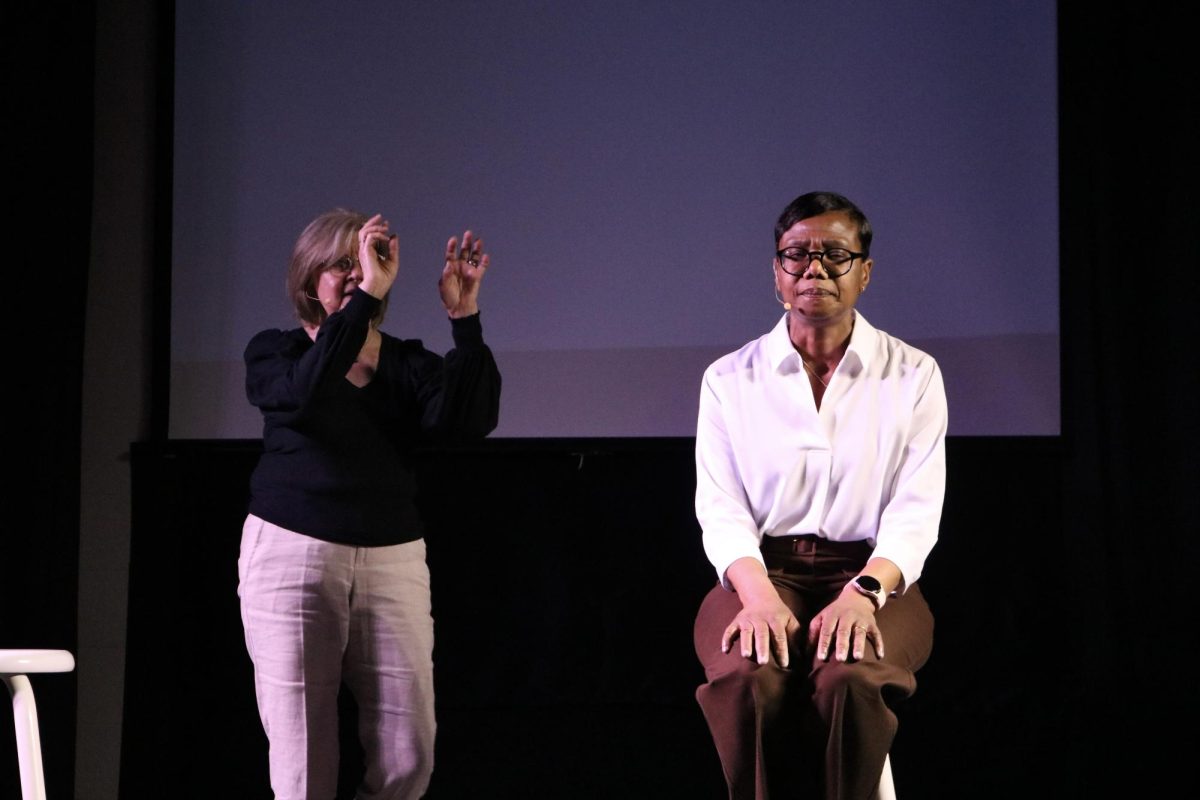







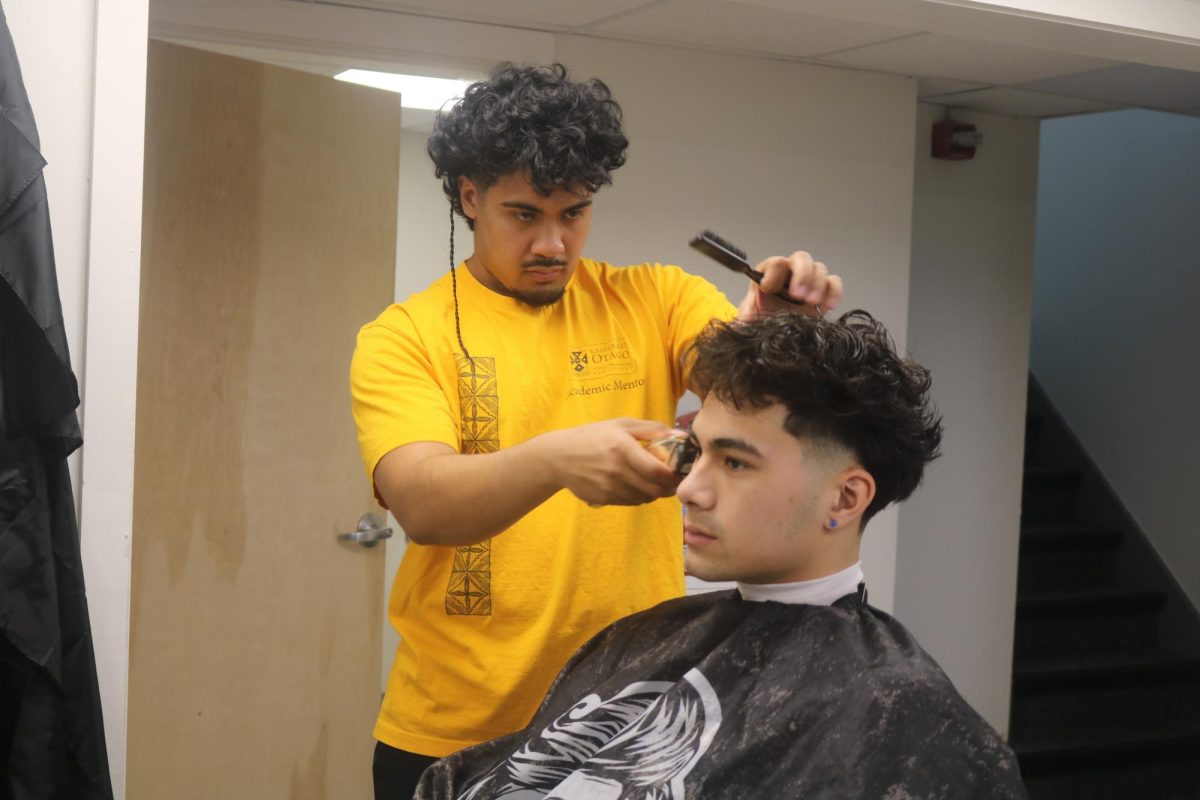















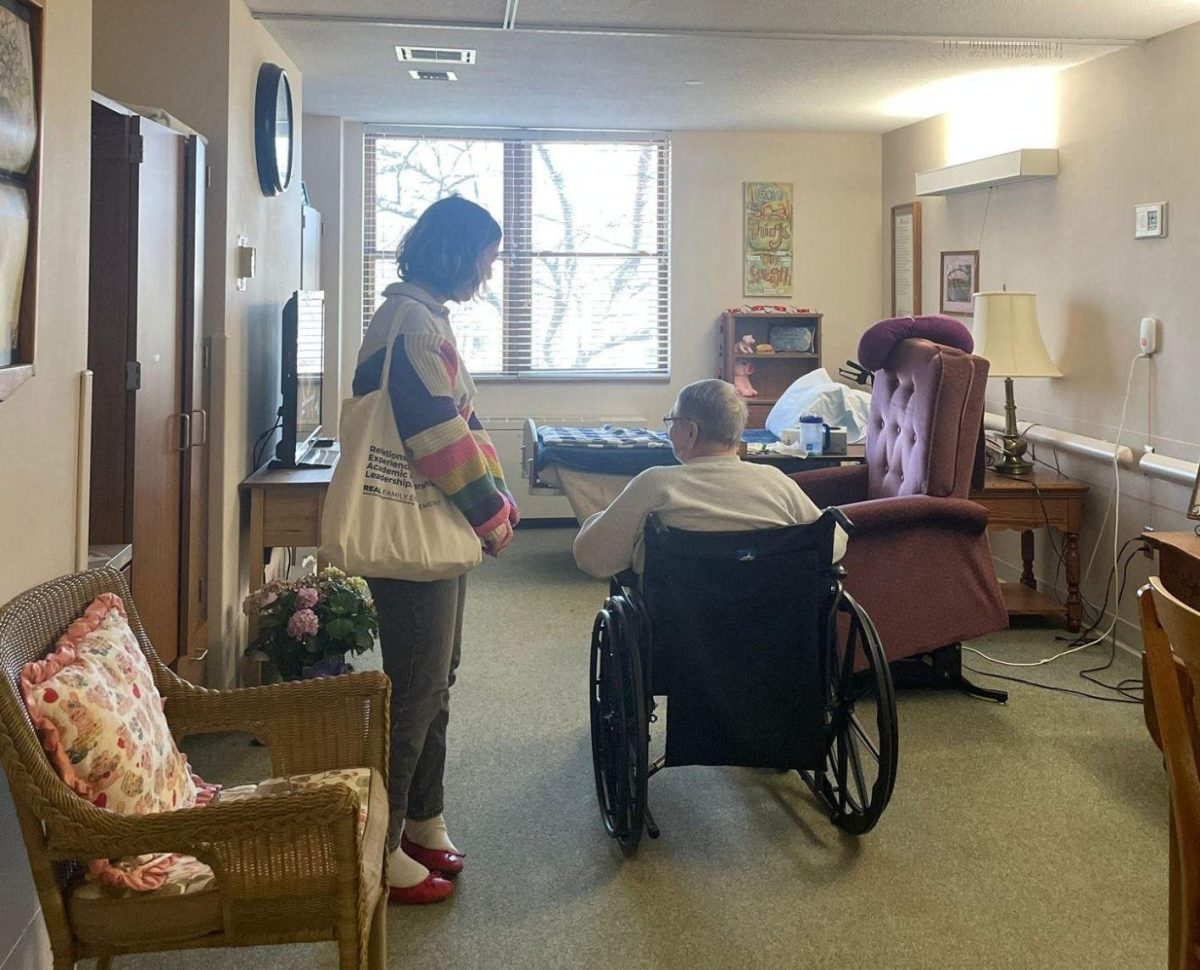

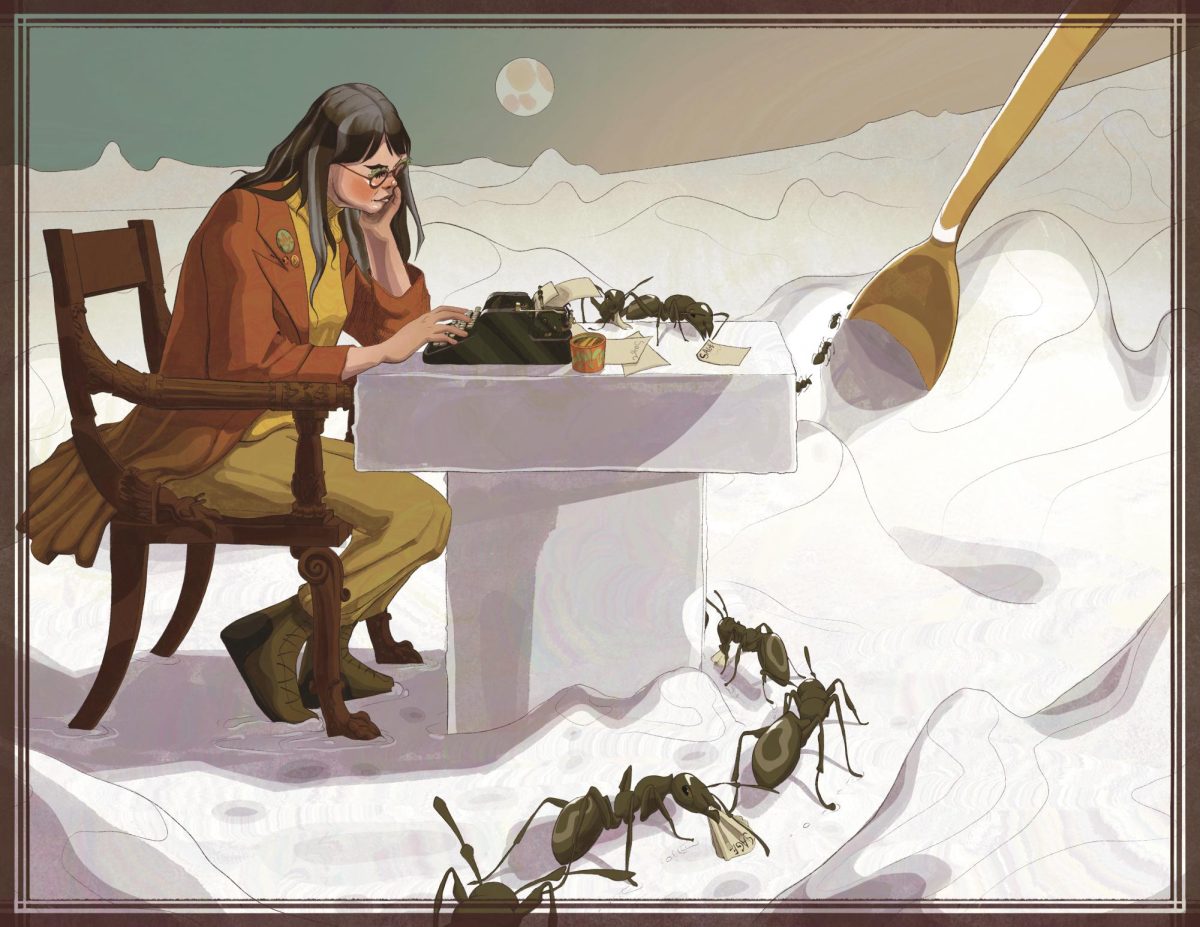























Arafat • Oct 26, 2014 at 9:02 am
Actually the largest colonial empire is Islam’s.
In a relatively short period of time (1,400 years) Islam has come to violently control over a billion people and huge geographic regions. And, of course, Muslims are continuing this imperialistic drive to control more and more people, land and resources as is evident in Sudan, Nigeria, Kenya, Thailand, Israel, Kashmir, southern Russia, NW China and elsewhere.